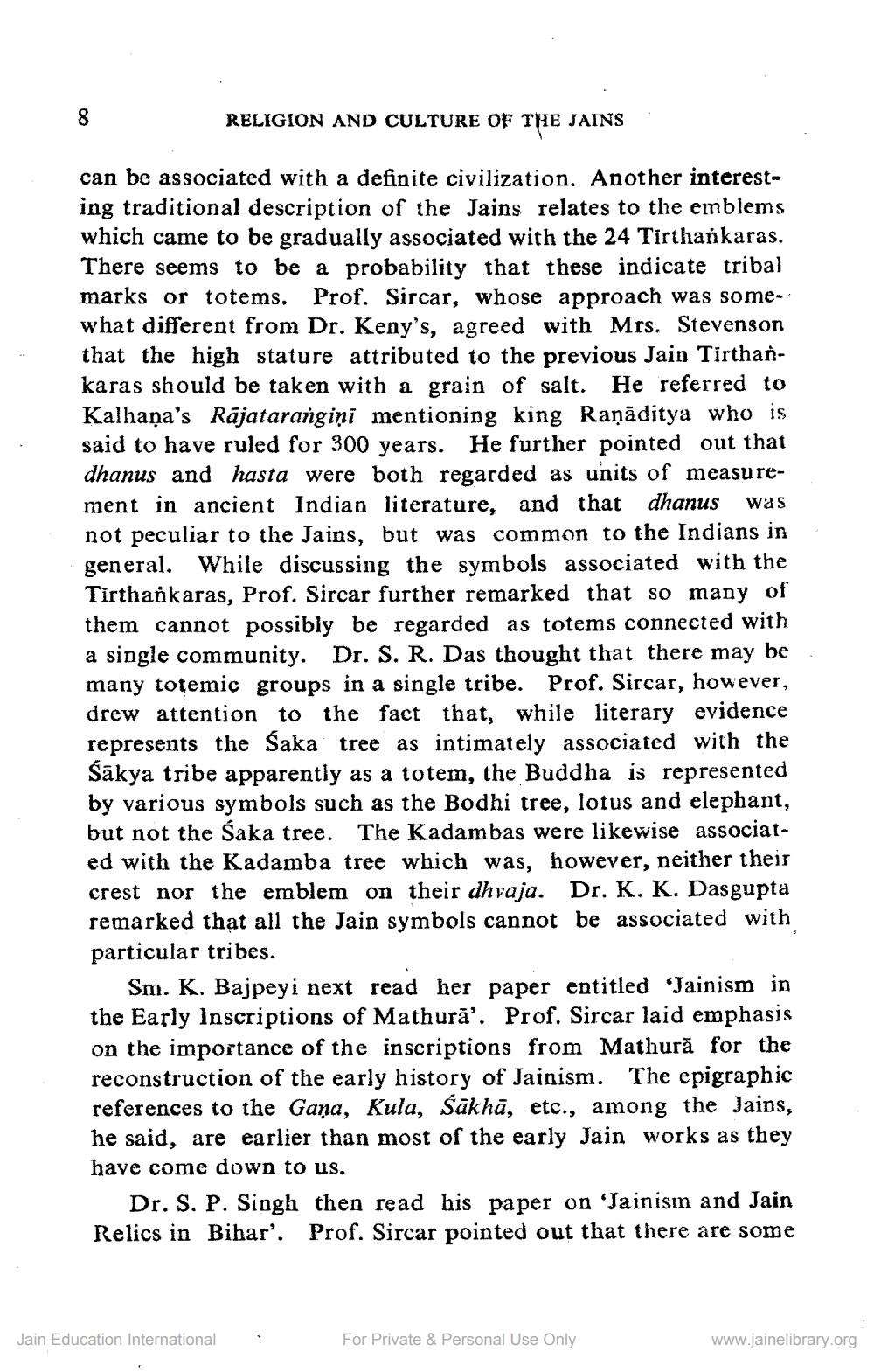________________
RELIGION AND CULTURE OF THE JAINS
can be associated with a definite civilization. Another interesting traditional description of the Jains relates to the emblems which came to be gradually associated with the 24 Tirthankaras. There seems to be a probability that these indicate tribal marks or totems. Prof. Sircar, whose approach was somewhat different from Dr. Keny's, agreed with Mrs. Stevenson that the high stature attributed to the previous Jain Tirthankaras should be taken with a grain of salt. He referred to Kalhana's Rājatarangiņi mentioning king Raņāditya who is said to have ruled for 300 years. He further pointed out that dhanus and hasta were both regarded as units of measurement in ancient Indian literature, and that dhanus was not peculiar to the Jains, but was common to the Indians in general. While discussing the symbols associated with the Tirthankaras, Prof. Sircar further remarked that so many of them cannot possibly be regarded as totems connected with a single community. Dr. S. R. Das thought that there may be many totemic groups in a single tribe. Prof. Sircar, however, drew attention to the fact that, while literary evidence represents the Saka tree as intimately associated with the Sākya tribe apparently as a totem, the Buddha is represented by various symbols such as the Bodhi tree, lotus and elephant, but not the saka tree. The Kadambas were likewise associated with the Kadamba tree which was, however, neither their crest nor the emblem on their dhvaja. Dr. K. K. Dasgupta remarked that all the Jain symbols cannot be associated with particular tribes.
Sm. K. Bajpeyi next read her paper entitled 'Jainism in the Early Inscriptions of Mathură'. Prof. Sircar laid emphasis on the importance of the inscriptions from Mathurā for the reconstruction of the early history of Jainism. The epigraphic references to the Gana, Kula, Sākhā, etc., among the Jains, he said, are earlier than most of the early Jain works as they have come down to us.
Dr. S. P. Singh then read his paper on 'Jainism and Jain Relics in Bihar'. Prof. Sircar pointed out that there are some
Jain Education International
For Private & Personal Use Only
www.jainelibrary.org




